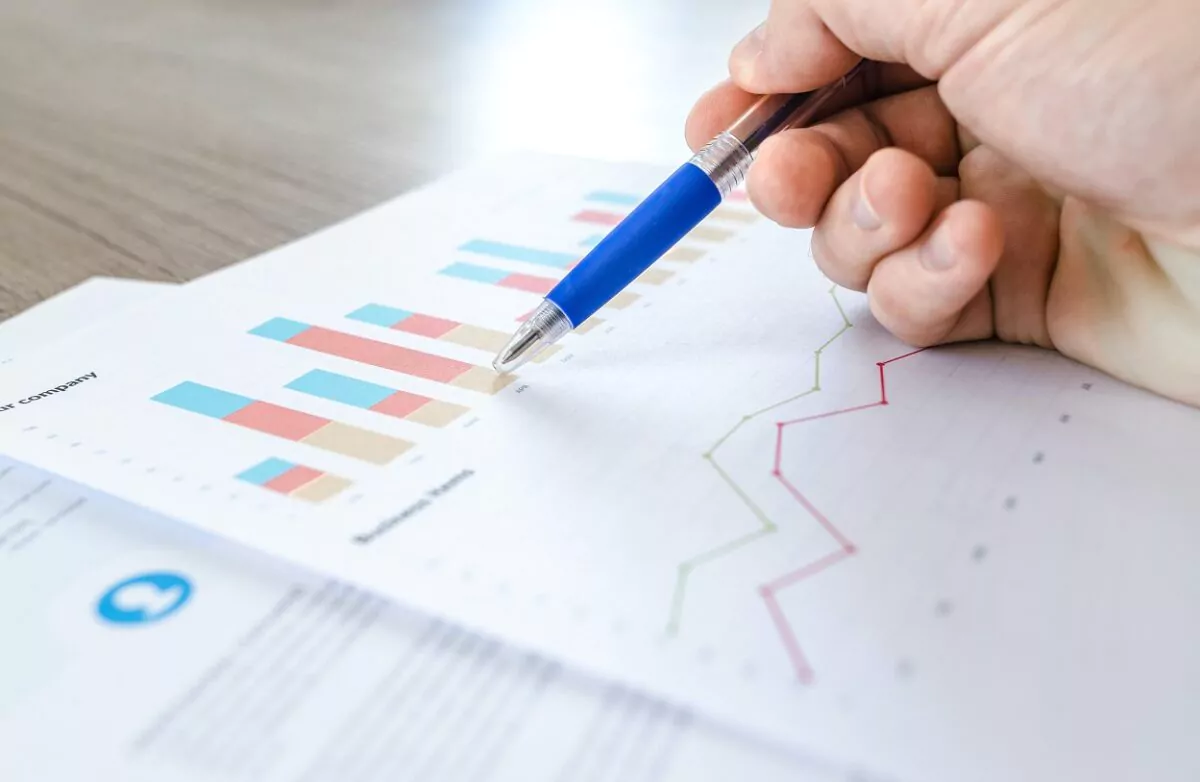The country’s GDP managed to return to pre-pandemic levels in about a year and a half, whereas in previous crises (1996-1997, 2008-2009) it took 5-6 years for the economy to fully recover, points out an analysis by economists at UBB Cluj, who tracked the effects of the pandemic in a research project. The Cluj researchers estimate that the early and dynamic phase of the recovery process is over and expect economic growth to slow down considerably.
Urmărește mai jos producțiile video ale Economedia:
- articolul continuă mai jos -
At the end of the year, the School of Social Sciences of Babeș-Bolyai University of Cluj-Napoca (UBB), through a team of researchers from the Faculty of Economics and Business Management (FSEGA), conducted an analysis of the evolution of the Romanian economy during 2021, presenting a series of forecasts for 2022, including the most important economic trends to watch in the coming period.
The UBB researchers point out that 2021 was the year of “particularly rapid” recovery of the economy, a phenomenon accompanied, however, by increasing inflationary pressures both domestically and abroad. After the 3.7% decline in 2020, Romania’s economy enjoyed a dynamic recovery, with the FSEGA specialists estimating a growth rate of 6.3% by the end of 2021. This development means that the country’s GDP managed to return to pre-pandemic levels in a relatively short period of time (in about 1.5 years), whereas in previous crises (1996-1997, 2008-2009) the economy took 5-6 years to fully recover, the analysis points out. As for the favorable evolution of GDP, the Cluj researchers identify several main factors.
One is the unprecedented peacetime support measures adopted by authorities around the world, which have led to a particularly dynamic recovery in the world’s major economies with positive effects, including on the Romanian economy.
On the domestic side, fiscal and monetary policy has been accommodative (the budget deficit remained high and the monetary policy interest rate significantly below inflation, supporting the recovery of the economy).
Also, compared to the 2008 crisis, the stronger financial situation of the private sector (in particular the household sector) played a significant role.
The ability of economic agents to adapt to the new conditions, but also the specific structure of the Romanian economy (the most affected sectors, tourism and hospitality, have low shares in Romania’s GDP) also played an important role.
According to the study, in the second half of 2021, Romania’s economy started to lose momentum amid rising inflationary pressures (with negative effects on real disposable income and, consequently, on real demand of the population), bottlenecks in some segments of the global production and supply chains (which negatively affected industrial activity in particular), respectively the worsening of the energy crisis and the autumn wave of the coronavirus pandemic.
The main economic phenomena of note in 2021 are, according to the Cluj researchers:
- The price of raw materials (in particular the price of a barrel of oil) has recorded a sinusoidal movement: after the WTI futures price went into negative territory for the first time in history (-$37.63 a barrel) at the height of the Covid crisis, it rose significantly in subsequent periods, reaching $71 a barrel in December 2021, thus outstripping even the pre-pandemic prices. There is no doubt that the rise in the price of oil and other raw materials contributes significantly to the inflationary pressures mentioned above.
- On financial markets: the world’s major markets have rebounded spectacularly from the crash at the start of the pandemic, with the S&P500 index in New York gaining 33% in the 22 months since the start of the pandemic and the BET index of the Bucharest Stock Exchange – 21.5%. One of the most important indicators of investment sentiment, the Shiller CAPE multiple calculated for the S&P500, is at an all-time high of 39.53 in December 2021, which many analysts say is a sign of market overheating.
- The depreciation of the leu against the euro since Covid’s debut in Romania has been 2.9%, which is a much more favorable performance compared to other currencies in the region, such as the Hungarian forint or the Polish zloty (with depreciation of 8.4% and 7.9% respectively over the same period), but at the same time a weaker performance against the Czech koruna, which depreciated by only 0.6% against the euro.
- Real estate prices experienced a short-lived decline of only 1-2 months at the beginning of the pandemic, followed by a sharp rise of up to 14.1% on a national average, 9% in Bucharest, and 16.7% in Cluj-Napoca, compared to the pre-pandemic period.
“2022 will be a challenging year from the perspective of maintaining psycho-socio-economic balances, therefore, any poor management of the pandemic will generate direct and immediate effects in the evolution of society and the national economy”, says UBB rector Daniel David.
“In 2021, we witnessed a dynamic recovery of the national economy, over a time horizon 3-4 times shorter than in previous economic crises, but with a significant loss of momentum towards the end of this year. An important factor in this development is the momentum generated by the reopening of national economies globally. In 2022, a change of approach in the management of the national economic situation is needed, without taking this factor into account. Moreover, without consistency and coherence in decisions affecting the national economy, we will not be able to continue stimulating private consumption growth”, adds FSEGA Dean Răzvan Mustață.
We are still lacking the necessary measures, even as the pandemic comes with new waves.
“In addition to the fact that the pace of economic recovery is visibly slowing down, for the year 2022 we must also take into account the fact that we are still in a period of pandemic and a new wave of the pandemic is already anticipated for the beginning of the new year, both in Romania and in other countries of the world. From an economic point of view, we must learn from previous waves – we already have the experience of more than a year and a half of pandemics – and manage this situation more effectively so that the economy suffers as little as possible. For example, the green certificate is one such solution that helps to combat the pandemic, but at the same time allows economic activities, especially in the service sector, to be carried out in safer conditions“, adds Szász Levente, research project coordinator and FSEGA pro-dean, to Economedia.
What’s next?
As far as the trends for 2022 are concerned, the researchers from Cluj believe that the early and dynamic phase of the recovery process is over and they expect economic growth to slow down considerably. Thus, after a spectacular recovery in 2021, the pace of economic growth could slow significantly, with estimates showing GDP growth of “only” 3.7% in 2022.
This forecast is mainly based on a number of factors. The researchers point out that in most countries (including Romania), the value of GDP in real terms has already reached or exceeded the pre-crisis level (Q4 2019), suggesting that the momentum generated by the reopening of economies has largely dissipated already.
Also, after the implementation of a set of ultra-expansionary measures in 2020-2021, the fiscal and monetary policy stance is expected to become less accommodative next year, both externally and domestically. “In this context, we also expect a gradual normalization of external demand,” the analysis says. It also mentions the sharp rise in consumer prices, which will have a negative impact on real disposable household income (especially in the first half of 2022), limiting the pace of private consumption growth.
“Most likely, the easing of bottlenecks in global production and supply chains and the energy crisis will be a relatively protracted process, limiting economic growth. Moreover, the pandemic is not yet over and, as a result, the health situation is likely to remain relatively difficult in 2022 (especially as new SARS-CoV-2 mutations emerge). In the baseline scenario, we expect the above-mentioned factors to significantly limit – but not reverse – the growth trend of the domestic economy, especially in the context of a relatively fast recovery of the labor market, and the European funds allocated to Romania under the NRDP are also likely to support domestic demand over the next year,” says the study conducted at the University of Cluj.
Prices. Annual inflation will peak in the second quarter of next year
As regards consumer price developments, the UBB researchers expect the annual inflation rate to peak in the second quarter of next year and then gradually moderate in line with the stabilization of energy prices and the easing of bottlenecks in the production and supply chains, but also in the context of monetary policy normalization.
The three main risk factors to watch in 2022, according to the study:
- Inflationary pressures both globally and domestically: inflationary shocks (including from the energy market and global supply chains) that are more persistent than expected could trigger a more rapid tightening of monetary policy with adverse effects on growth and financial conditions.
- Possible emergence of more aggressive strains of SARS-CoV-2.
- Specific vulnerabilities of Romania: relatively high current account deficit and structural budget deficit.
Pandemic Economy Monitoring Project
The study is carried out in the framework of the COVID-19: Romanian Economic Impact Monitor research project, a project that monitors the evolution of the national economy in real-time in the context of the pandemic, i.e. the economic situation of the country, while providing short and medium-term forecasts on the pandemic and Romania’s economic performance. The full results of the research project, updated daily, can be consulted on the COVID-19 RoEIM online platform (econ.ubbcluj.ro/coronavirus) and more detailed analyses are published continuously on the project’s Facebook page (www.facebook.com/covid19.roeim).
The research project is coordinated by Szasz Levente (professor, UBB FSEGA), and the team members are Balint Csaba (BNR, associate professor UBB FSEGA), Csala Denes (Lancasler Universily, associate professor UBB FSEGA), Csiki Ott6 (PhD student UBB FSEGA), Nagy Balint Zsolt (lecturer UBB FSEGA), and Racz Bela-Gergely (lecturer UBB FSEGA).

 Foto: Pexels/Pixabay
Foto: Pexels/Pixabay





























